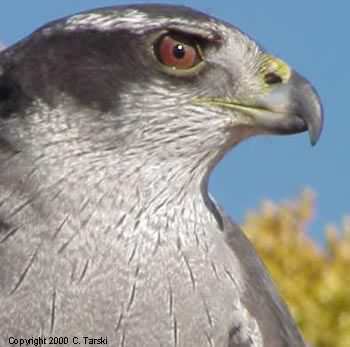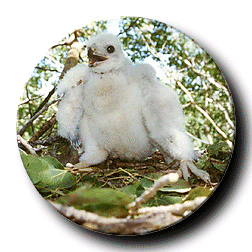
| Issue 3, Summer 2003 | ||||
Gone the Way of the Goshawk?
The bird has been known to live in Arizona's Coronado, Apache-Sitgreaves, Coconino, and Kaibab national forests. The court decision was criticized by Kieran Suckling, executive director of the Tucson-based Center for Biological Diversity. He said the court - just like the Fish and Wildlife Service - ignored evidence presented by his organization showing goshawk populations declining. "There
are virtually no goshawks left on the West Coast," he said. In
Arizona, Suckling said, the state Game and Fish Department has had a
10-year monitoring program in the Sitgreaves National Forest where there
is virtually no old growth left. "Goshawk populations have been going down the tubes," he said. "And that was before the Rodeo-Chediski Fire." The petition, filed in 1991, sought the listing of the entire goshawk population in forested areas west of the 100th parallel - basically all the territory west of Texas and Oklahoma. It took a separate federal lawsuit to get the agency to study the issue. Judge Donald P. Lay, writing for the unanimous appellate court in this case, said a team of nine wildlife biologists assembled by the Fish and Wildlife Service concluded the goshawk population was well distributed throughout the 222 million acres at issue and found no evidence that its range had significantly diminished.
Old Growth Forever!To learn more about the Old Growth Forever campaign and how you can help protect the North Kaibab’s remaining old growth forests, visit the Southwest Forest Alliance website at: www.swfa.org , or contact us at swfa@swfa.org, (928) 774-6514.
|
||||
 From
Capital Media Services--A federal appeals court has rejected
efforts to classify the northern goshawk as threatened or endangered.
In a unanimous ruling on July 21st, a three-judge panel of the 9th U.S.
Circuit Court of Appeals said there is no evidence that the bird "is
endangered or likely to
From
Capital Media Services--A federal appeals court has rejected
efforts to classify the northern goshawk as threatened or endangered.
In a unanimous ruling on July 21st, a three-judge panel of the 9th U.S.
Circuit Court of Appeals said there is no evidence that the bird "is
endangered or likely to 
 Lay
said that team also concluded that existing foresting activities were
unlikely to affect the goshawk. Based on that, the Fish and Wildlife
Service concluded in 1998 there was no reason for listing - a decision
the recent ruling said should not be disturbed. Suckling noted that
the Center for Biological Diversity has a separate lawsuit pending that
would challenge logging plans in 11 national forests in Arizona and
New Mexico, based at least in part on the effect that would have on
the goshawk.
Lay
said that team also concluded that existing foresting activities were
unlikely to affect the goshawk. Based on that, the Fish and Wildlife
Service concluded in 1998 there was no reason for listing - a decision
the recent ruling said should not be disturbed. Suckling noted that
the Center for Biological Diversity has a separate lawsuit pending that
would challenge logging plans in 11 national forests in Arizona and
New Mexico, based at least in part on the effect that would have on
the goshawk. 
 Our
list of outdoor events has diminshed somewhat due to the Arizona summer heat,
but take a look anyway! We are offering several exciting wilderness excursions
around the state.
Our
list of outdoor events has diminshed somewhat due to the Arizona summer heat,
but take a look anyway! We are offering several exciting wilderness excursions
around the state. 
